 Royal Flycatcher (Onychorhynchus coronatus)
Royal Flycatcher (Onychorhynchus coronatus)
 Royal Flycatcher (Onychorhynchus coronatus)
Royal Flycatcher (Onychorhynchus coronatus) |
 |
| Pictures (click on them to enlarge) | ||
|---|---|---|
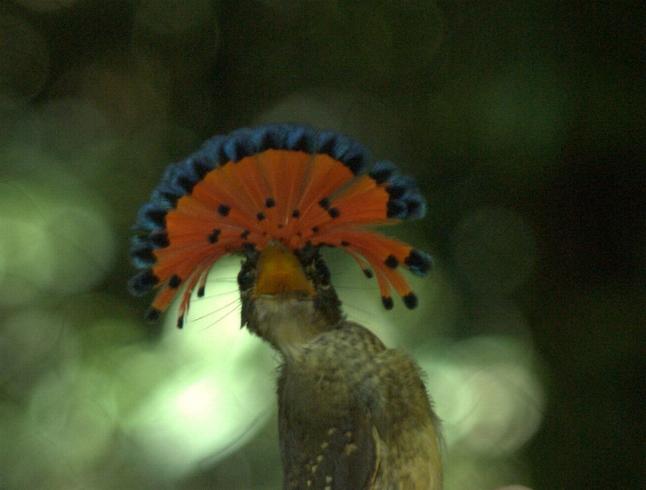 © John Mittermeier | 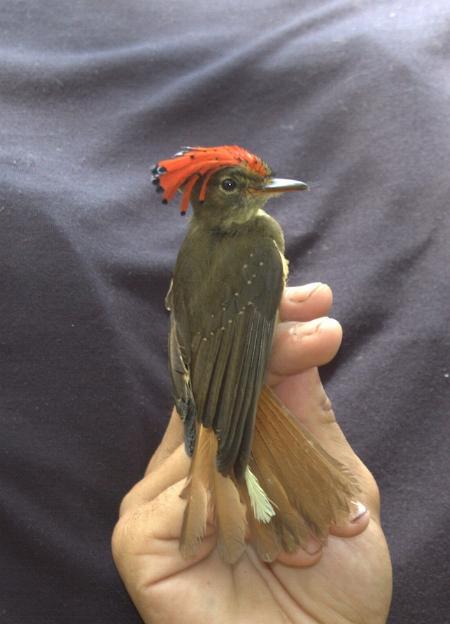 © John Mittermeier | 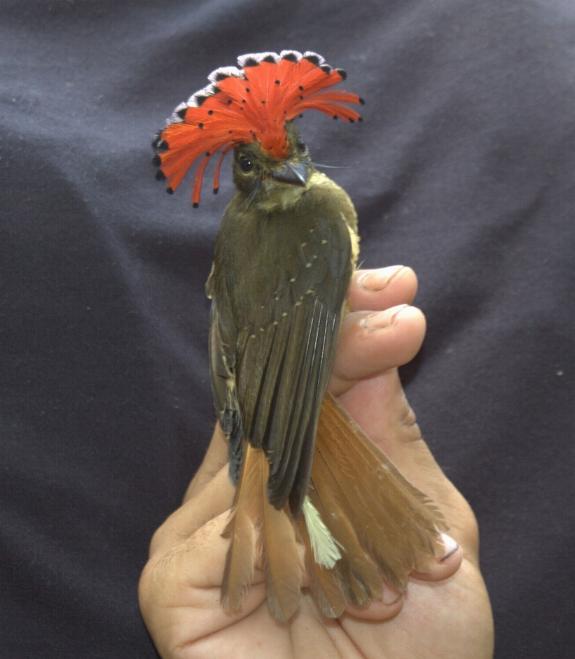 © John Mittermeier |
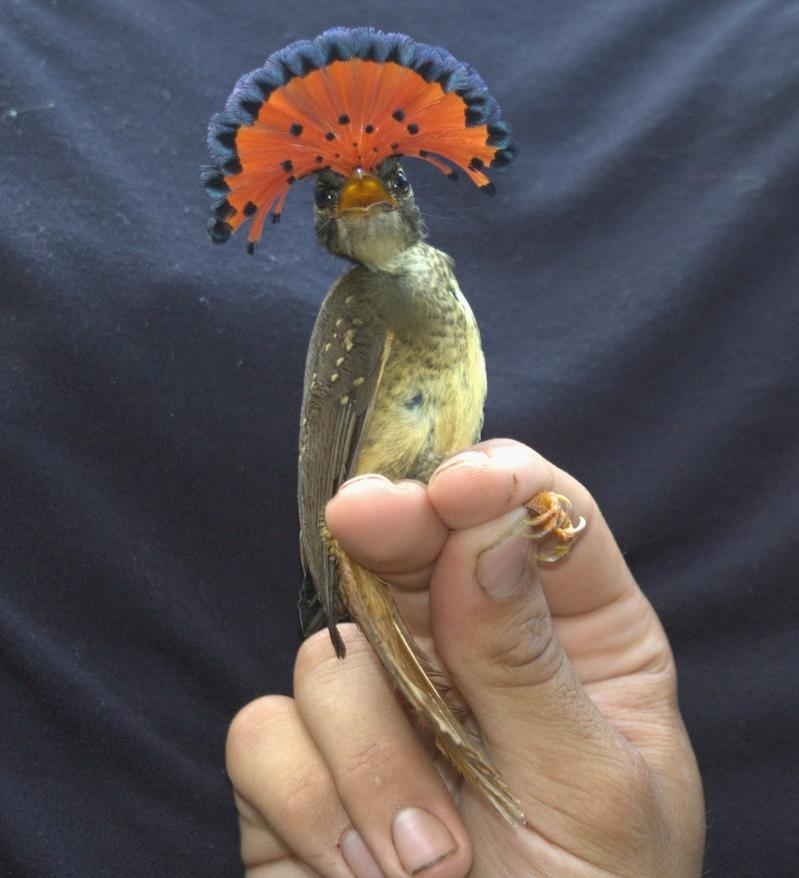 © John Mittermeier |  © John Mittermeier | 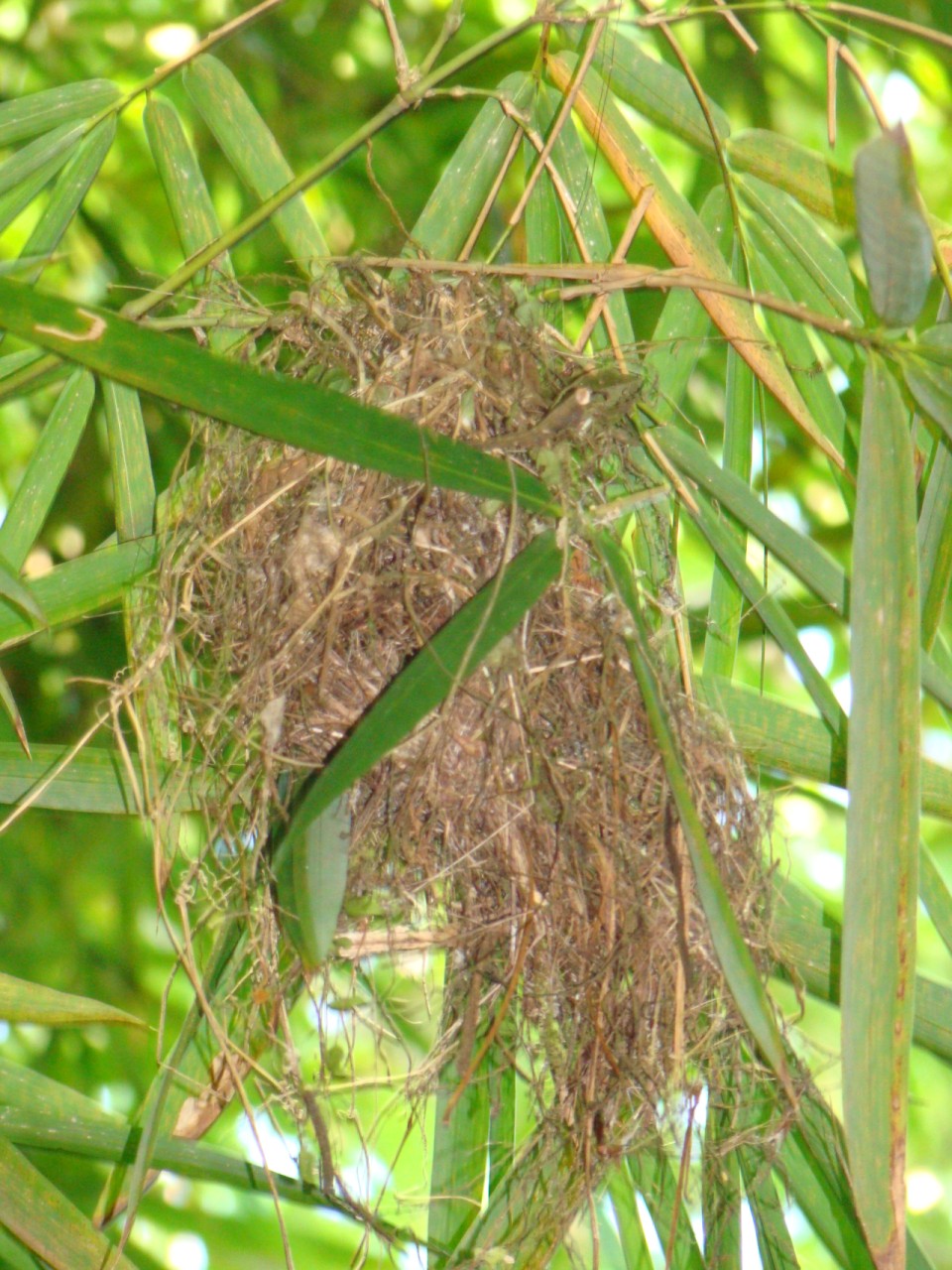 nest Aug'09 © Dominiek Plouvier |
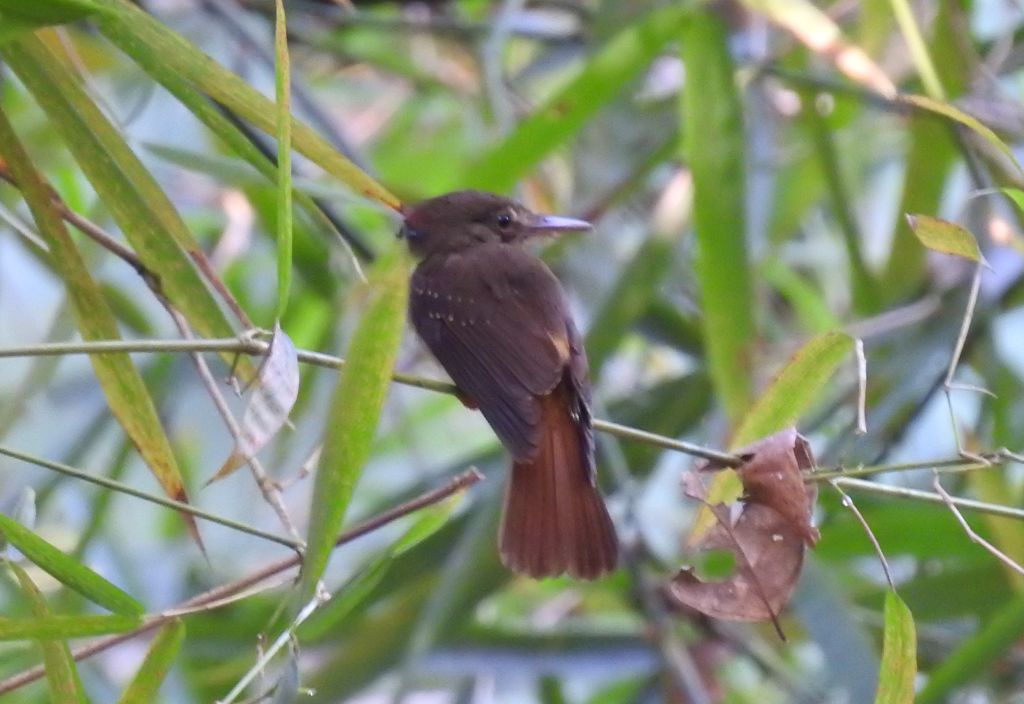 © Dominiek Plouvier |
| Photos of a male Amazonian Royal Flycatcher, caught by John Mittermeier in the Sipaliwini savanna in Suriname in 2006. The crest here is raised probably because it is excited and does not like being caught (who would), but its normal function will be for courtship display, I guess. As you can see on the pictures the crest is not, as with most crested birds, along the length axis of the bird, but transverse. Normally you see the bird in forest near water, seeking for insects to catch and then it has its crest folded back on its head, so you would not notice the colors. It has a very long nest hanging from a branch with a side entrance and this is often seen in Peperpot Dominiek Plouvier made a video of a nest with the Royal Flyctcher inside |
| Video (click the link or the 'play'-button to see) | ||
|---|---|---|
| Video recording of a Royal Flycatcher © ; |
|
|
||||||||||||||||||||||||||||||||||||||||||||
| Observations through the year | Observations of breeding through the year |
|---|---|
| The 59 reported observations of this bird in Suriname, mainly for the last 50 years up to 2018, have been grouped by month. More birds on one day are counted as one observation. Of course, if the graph should depict the total number of birds seen, the differences between the months could be much more pronounced. | The 7 reported breeding observations of this bird in Suriname. Most observations are about nest with eggs, some about fledglings, or feeding at a nest or the building of a nest. Of the about 5000 nests and eggs found for all species together, about 1/3 comes from the egg collection of Penard between 1896 and 1905. For some reason most collecting then was done in the first half of each year, so the shown distribution does not necessarily reflect the actual breeding preferences. The main dry season in Suriname is reckoned to be from half August to the end of November, the main wet season from half April to half August, but the the timing of begin and end does vary from year to year. Around March a second dry season often occurs. |